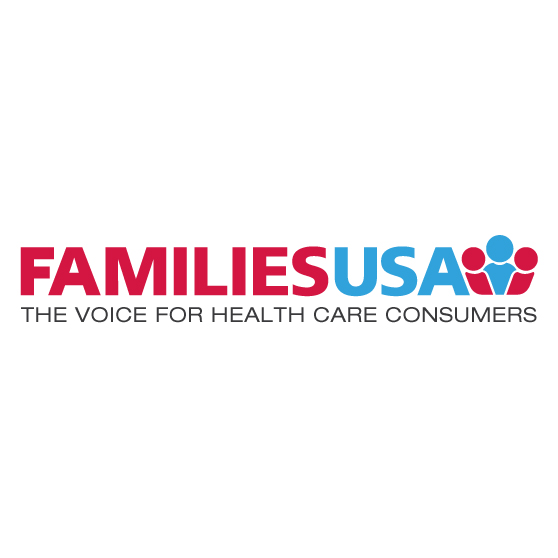Medicaid Managed Care Rule: Improving the Enrollment Experience
By Kara Nester,
05.26.2016
In April, the Obama administration issued sweeping new standards to guide the operation of state Medicaid managed care plans. The new rules are a big deal in part because they affect so many people: There are more than 72 million people enrolled in Medicaid. Three-quarters of them are in private managed care plans across 39 states.
This is the first in a series of analyses explaining some of the major changes. It analyzes how the new standards affect the enrollment process. The others will look at the provisions relating to the quality rating system, payment and delivery reform, and network adequacy.
What is Medicaid managed care?
States with Medicaid managed care programs provide coverage to Medicaid enrollees through contracts with managed care entities rather than through traditional “fee-for-service” Medicaid. Medicaid managed care continues to expand and, over the past several years, many states have transitioned to statewide Medicaid managed care.
Overall, the changes affecting enrollment in Medicaid managed care, including information provided to individuals, are a significant step toward improving the enrollment and navigation of the Medicaid managed care system for consumers. These new requirements also provide an opportunity for advocates and enrollment assisters to work with their states to secure meaningful investments in outreach, enrollment, and consumer education.
Every state must create a “beneficiary support system”
One of the most significant changes to enrollment in the new rule is the requirement that states have a “beneficiary support system” in place for plan years that begin in July 2018 or later. We are pleased by this new requirement, which recognizes the importance of in-person assistance for helping people enroll in Medicaid managed care and for helping people understand how to use their coverage. Advocates should be engaged in the implementation of this requirement to ensure that the system created meets the unique needs of Medicaid enrollees.
The support system will provide individuals with information to help them maximize their health coverage, including how to enroll in a plan and how to use health plan benefits once enrolled. There is also a requirement to perform outreach to people who might be eligible for coverage. The three main components of the new system are:
- “Choice counseling,” which refers to assistance that guides enrollees through the process of selecting a plan. States must make choice counseling available to all enrollees and in various formats including phone, web, in-person, and through auxiliary aids, when needed.
- Assistance for enrollees in understanding managed care, such as help choosing a provider and navigating the system.
- Assistance for those who use long-term services and supports (LTSS)
The beneficiary support system requirement will help ensure that states are providing consumers with the support they need to enroll in Medicaid managed care. Enrollment assistance, like choice counseling, is a crucial consumer support and helps individuals understand their plan choices and successfully enroll in a plan. Support after enrollment, like navigating a provider directory and picking a primary care provider, is essential for ensuring that consumers use the range of services provided by Medicaid.
Nevertheless, the beneficiary support system requirement is fairly broad. It allows states to use existing resources and, when feasible, contract with various community organizations to provide these services. CMS estimates that approximately 20 states will need to create a new infrastructure to meet the requirements of the beneficiary support system.
States can obtain federal financial assistance for enrollment services. These services—which include choice counseling, and the distribution, collection, and processing of enrollments—are eligible for support under the Medicaid program at the administrative match rate. An administrative match for enrollment services means that the federal government will pay half for the services provided.
We encourage stakeholders to work with their states to ensure that states take advantage of this new opportunity to provide robust, comprehensive application and enrollment services to Medicaid beneficiaries.
CMS is giving states flexibility regarding how they complete the new support system requirements. We encourage state advocates, and other stakeholders, to work with their states to create robust beneficiary support systems. We believe that the states that will be the most successful in building a strong system are those that invest in in-person assistance to ensure consumers understand their Medicaid coverage.
States that employ choice periods should allow adequate time for enrollees to make a meaningful selection
The use of managed care adds a layer of complexity to the Medicaid enrollment process for consumers. First—as is the case with all Medicaid programs—individuals must complete an application to determine their eligibility for Medicaid. Unlike fee-for-service Medicaid programs, those enrolling in Medicaid managed care must then select and enroll in a managed care plan.
States are required to give enrollees at least two managed care plan options (note that there are exceptions for rural areas) so the process of selecting a plan requires an enrollee to consider multiple plan options. How individuals actually choose and enroll in managed care plans varies widely from state to state. While some states allow individuals to have a “choice period”—where enrollees have a specified time period to consider their plan choices—other states require that individuals choose a plan at the time of application.
In the new rule, CMS clarifies that all states—whether or not they give people a “choice period” – must give consumers a 90-day period to switch plans after initial plan selection. We encourage states that implement choice periods to allow an adequate period of time for enrollees to consider their options when enrolling in a health plan. For example, Michigan’s choice period gives enrollees 30 days before they are auto-assigned into a plan.
States continue to have flexibility regarding whether to give enrollees this choice period after their eligibility is granted or to enroll beneficiaries directly into managed care at the time of application.
Opportunity to streamline annual redetermination and plan selection
While we are disappointed that the final rule did not require states to align annual open enrollment periods with annual redetermination processes, states still have the option to do this on their own. We encourage advocates and assisters to raise this issue with their states and urge them to create a streamlined process for beneficiaries.
For Medicaid managed care, the option to switch plans does not always take place at the same time of year as the annual redetermination process (which is when an enrollee’s eligibility is re-checked).
For example, in the state of Tennessee, the open enrollment opportunity depends on where an enrollee lives and the timing for a person’s redetermination depends on when they enrolled in Medicaid. Meanwhile, states such as Minnesota and Oregon benefit from allowing the enrollee to complete their redetermination and switch plans within the same annual timeframe.
The separation of the redetermination process from plan selection often leads to confusion among enrollees, who may miss their annual opportunity to switch managed care plans. (Note: Many states call the annual opportunity to switch Medicaid managed care plans “open enrollment.” This is not the same as open enrollment for private health insurance plans.)
Families USA submitted comments to the proposed rule asking for several changes related to these timelines because many states have experienced confusion among enrollees and lower rates of active plan selection when these two processes are not aligned.
Information to enrollees and potential enrollees
The new rule mandates that states give potential enrollees more information about their rights and enrollment options when they first are determined to be eligible for Medicaid. While this is a significant improvement that will ensure that consumers know more about the enrollment process, we encourage advocates to ensure that these notices are as transparent as possible and accessible to a wide range of consumers. Examples of additional measures to advocate for include taglines for limited English proficiency (LEP) individuals and ensuring that notices are written at an appropriate reading-level.
Informational notices must be provided by the state to beneficiaries in a timely manner so that they are able to explore their plan options. These notices will clearly explain to enrollees how the state’s managed care enrollment process works, including important details about the amount of time the person has to select or change managed care plans.
All notices must include the following:
- Plan options and the basic features of managed care
- The length of time available to select or switch plans and any lock-in periods (periods of time when an enrollee can only change their plan “with cause”)
- Situations where an enrollee can dis-enroll from a plan
- The availability of the beneficiary support system, which includes the availability of choice counseling to aid in plan selection
States will be responsible for creating these notices starting in the July 2017 plan year or later. We encourage advocates to work with their states to ensure that these notices are easy to read, culturally and linguistically appropriate, and convey this important information in a consumer-friendly format.
The final rule still leaves significant room for state flexibility
Overall, the new Medicaid managed care rule requirements for enrollment and consumer support are a significant step toward making the enrolling into coverage and using coverage easier and more transparent for consumers. However, states have a great amount of flexibility when implementing these new requirements. We recommend that advocates work with states to optimize the new requirements into meaningful changes that prioritize consumer understanding and support in-person assistance.




